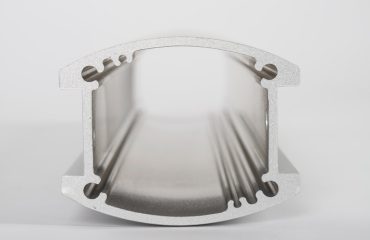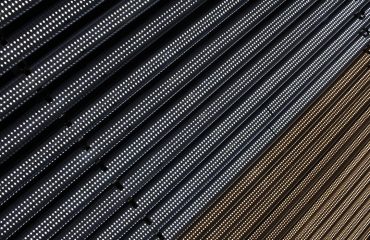The strength and reliability of steel structures, from skyscrapers to bridges to vehicles, depend critically on the quality of the steel itself. Maintaining consistent and high-quality steel requires a rigorous and multifaceted approach to quality control. This post delves into the essential methods used to ensure the integrity and performance of steel products throughout the manufacturing process.
1. Chemical Composition Analysis: The Foundation of Steel Quality
The chemical composition of steel is paramount to its properties. Variations in the percentages of elements like carbon, manganese, silicon, phosphorus, sulfur, and alloying additions (chromium, nickel, molybdenum, etc.) significantly influence the final steel’s strength, hardness, ductility, weldability, and corrosion resistance. Chemical analysis is performed at various stages of production, from raw material inspection to finished product verification. Common analytical techniques include:
- Spectroscopy (OES): Optical Emission Spectrometry is a rapid and accurate method for determining the elemental composition of steel. It involves exciting the sample with an electric arc or spark, analyzing the emitted light to identify and quantify the elements present.
- X-ray Fluorescence (XRF): XRF uses X-rays to excite the atoms in the steel sample, causing them to emit characteristic X-rays. Analyzing these X-rays provides information about the elemental composition.
- Wet Chemical Analysis: While slower than spectroscopic methods, wet chemical analysis offers high accuracy and is often used for reference or verification purposes. It involves dissolving the steel sample in acid and then using chemical reactions to determine the concentration of individual elements.
Strict adherence to specified chemical compositions is crucial for meeting the required material specifications and ensuring consistent product quality.
2. Mechanical Testing: Assessing the Steel’s Strength and Ductility
Mechanical testing evaluates the steel’s physical properties, providing insights into its strength, ductility, toughness, and hardness. These tests are essential for verifying that the steel meets the required performance standards. Common mechanical tests include:
- Tensile Testing: This classic test measures the steel’s tensile strength (ultimate strength and yield strength), elongation (ductility), and reduction in area. It provides critical information about the steel’s ability to withstand tensile loads.
- Hardness Testing: Hardness tests, such as Brinell, Rockwell, and Vickers, assess the steel’s resistance to indentation. Hardness is a good indicator of the steel’s strength and wear resistance.
- Impact Testing (Charpy or Izod): These tests determine the steel’s ability to absorb energy upon impact, providing insights into its toughness and resistance to brittle fracture at low temperatures.
- Fatigue Testing: This test assesses the steel’s resistance to failure under cyclic loading, crucial for applications involving repetitive stress.
Mechanical testing data provides vital information for designing and selecting appropriate steel grades for specific applications.
3. Non-Destructive Testing (NDT): Ensuring Integrity Without Damage
Non-destructive testing (NDT) methods allow for the evaluation of steel’s integrity without causing damage to the material. These techniques are essential for detecting internal flaws, such as cracks, porosity, and inclusions, which can compromise the steel’s strength and reliability. Common NDT techniques include:
- Ultrasonic Testing (UT): UT uses high-frequency sound waves to detect internal flaws. The sound waves reflect off discontinuities, providing information about their size, location, and orientation.
- Radiographic Testing (RT): RT uses X-rays or gamma rays to penetrate the steel and create an image on a film or detector. This image reveals internal flaws and variations in density.
- Magnetic Particle Testing (MT): MT is used to detect surface and near-surface cracks in ferromagnetic materials. Magnetic particles are applied to the surface, and they accumulate at the cracks, making them visible.
- Liquid Penetrant Testing (PT): PT is used to detect surface-breaking flaws. A penetrating liquid is applied to the surface, and excess liquid is removed. A developer is then applied, drawing the liquid out of any flaws, making them visible.
NDT is critical for ensuring the safety and reliability of steel components in critical applications.
4. Microstructure Analysis: Unveiling the Internal Structure
The microstructure of steel, the arrangement of its constituent phases (ferrite, pearlite, martensite, etc.), significantly influences its mechanical properties. Microstructure analysis involves examining the steel’s internal structure using microscopy techniques. This analysis provides insights into the steel’s processing history and helps to explain its observed properties. Common techniques include:
- Optical Microscopy: This technique uses a light microscope to examine the etched surface of a steel sample, revealing the different phases and their distribution.
- Scanning Electron Microscopy (SEM): SEM provides higher magnification and resolution than optical microscopy, allowing for detailed examination of the microstructure.
- Transmission Electron Microscopy (TEM): TEM offers the highest resolution, allowing for the study of individual dislocations and other microstructural features.
Microstructure analysis is crucial for understanding the relationship between processing parameters, microstructure, and final properties, enabling optimization of steel production processes.
5. Process Control Strategies: Maintaining Consistent Quality Throughout Production
Effective process control is essential for ensuring consistent steel quality throughout the entire production process. This involves monitoring and controlling various parameters, such as temperature, time, and atmosphere, during melting, casting, rolling, heat treatment, and finishing operations. Process control strategies include:
- Automated Process Monitoring and Control Systems: These systems continuously monitor key parameters and automatically adjust process variables to maintain optimal conditions.
- Statistical Process Control (SPC): SPC uses statistical methods to monitor and control process variations, identifying and addressing potential problems before they lead to defects.
- Regular Audits and Inspections: Regular audits and inspections of equipment and processes help to identify and correct potential sources of variation.
- Continuous Improvement Initiatives: Implementing continuous improvement initiatives, such as Lean manufacturing principles, helps to optimize processes and reduce waste.
A robust process control system is fundamental to producing high-quality steel consistently and efficiently.
By employing a combination of these quality control methods, steel manufacturers can ensure the production of high-quality steel that meets the stringent demands of various industries. Continuous improvement and adaptation of these methods are crucial to maintain competitiveness and meet evolving industry standards.
SEO Tags:
Steel Quality Control, Steel Testing Methods, Non-Destructive Testing Steel, Steel Microstructure Analysis, Chemical Analysis Steel




